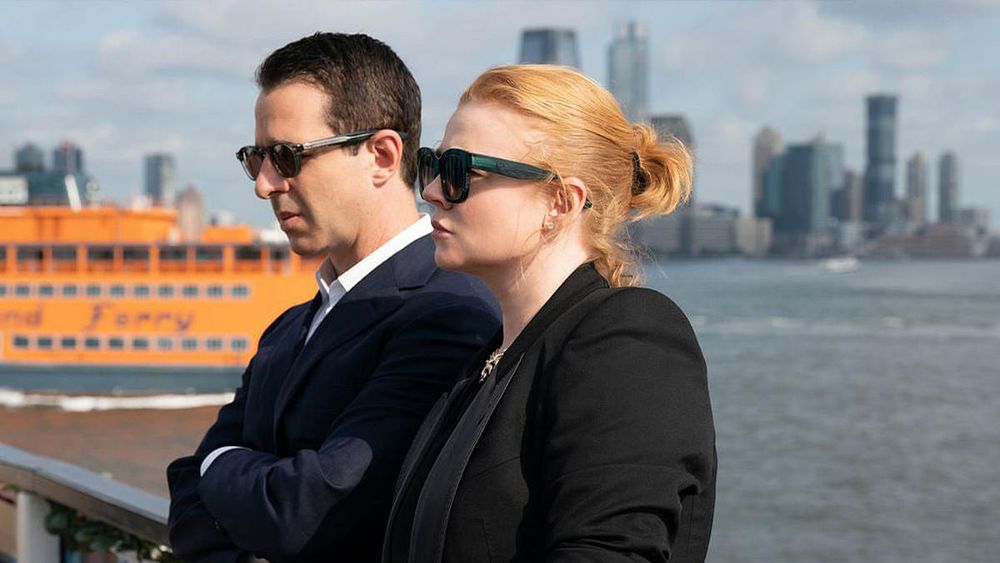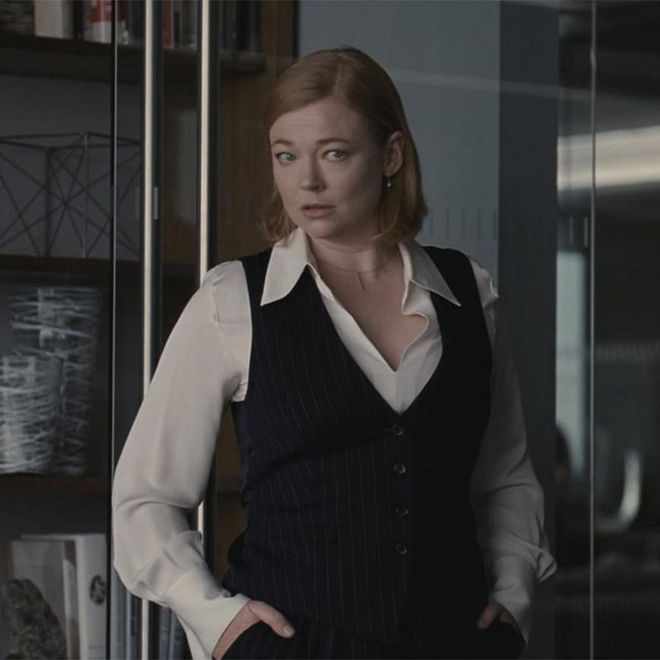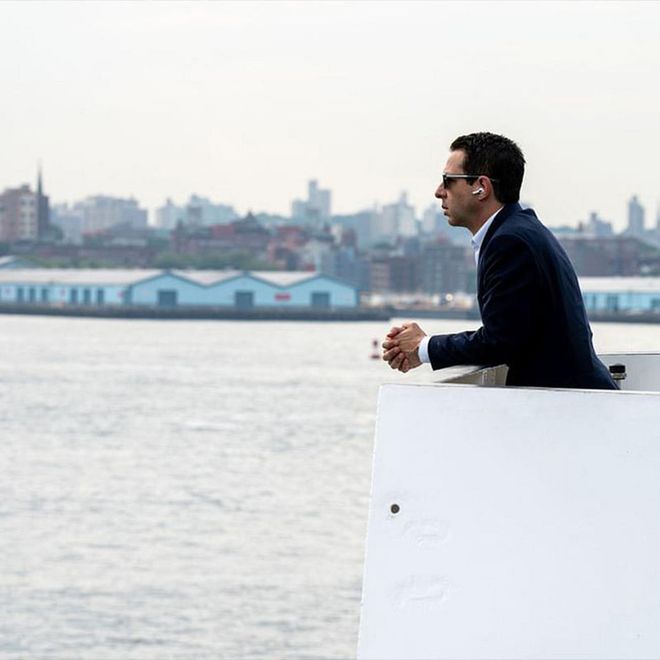What's With The Quiet Luxury Trend? Thank 'Succession's' Costume Designer
“Quiet luxury” might not be as unattainable as you might think.

Every few years, a television show becomes so overwhelmingly successful that it starts to impact the culture in the most unexpected of ways. Is probably isn’t a coincidence that HBO boardroom drama Succession’s blockbuster final season coincides with the “quiet luxury” mini-boom we’re seeing in the worlds of fashion and interior decor. And that’s because after years of there being so much showing off in fashion—the logos, the oversized proportions, the 90’s-inspired everything, the TikTok of it all—the clothes of Succession have been a bastion of restraint and elevated taste. This show could make even the most trend-driven dressers consider the prospect of a quintessential navy turtleneck.
By the time the show’s final episode airs on May 28th and the Roy family bloodbath inevitably comes to an end, we’re going to have to mourn this show’s singular sense of style. Go easy on us fans as we cope. Where else on TV can we expect to see “ludicrously capacious” luxury handbags? Loro Piana cashmere baseball caps? Blouses that cost as much as mortgage payments?
This one-percenter fantasy comes thanks to costume designer Michelle Matland, who has costumed the series since it began production in 2017. We caught up with the legendary costume designer as her five-season run winds down to an end. She spoke about the collaborative nature of how the show’s costumes came to be—and how even the most-expensive looking pieces came from some pretty unexpected places.
Related article: Costume Designers Of ‘Just Like That…’ Want You To Shop Like Carrie Bradshaw
What is your approach for costuming a show like Succession?
Well I always followed the premise, always following [the show’s creator and showrunner] Jesse Armstong and the writers room, starting with the words on the page and then going to the actors in the fitting room and finding out how the script translates to costume. I’m driven completely by the language, the style, and the inferences. Pretty much everything is designed as a followup to the story.
Whose costumes have changed the most?
Shiv’s transformation has been pretty dramatic. She started wanting to be a part of the political world, so she wanted to dress down so she could fit in, and not always be identified as affluent as she is. But over the seasons, she started to change her directions as she came back to the family, so she needs to fit in the boardroom with everyone else. You especially see this in the third season, where she’s kind of finding herself and identifies herself not only as a sexual being, but she’s also putting pieces of the puzzle together so she can basically battle within the family with her brothers.
Does her transformation continue this season?
This season you will see yet again a new version of Shiv. She knows who she is as a woman, as a business woman, and I think you will see more of a transformation as we go through. It’s a melange of al the seasons. You see a little bit of her as a woman, but we also go back to all those suits. There are other things that I can’t divulge yet, too!

Sarah Snook as Shiv Roy in season 4 of Succession. (Photo: HBO)
Sarah Snook as Shiv Roy in season 4 of Succession.
What were some of your inspirations and references in costuming Succession?
At the beginning, very early on, I would go down to different corporations on Wall Street and sit in the lobbies and see who came through the door. It as very clear that you could absolutely tell who was the lower echelon in a company and who was a corporate head. We did a lot of research on America’s great corporate families, too. The Murdochs and such.
The term “quiet luxury” has become very trendy in fashion these days, and I think the success of this show might have something to do with the term’s popularity. I have often wondered—are the costumes we’re seeing on screen actually as expensive as they look?
That’s a tricky question. They can be. I won’t say that I have never found something terrific at a Zara…. and occasionally I’ve been to Men’s Wearhouse. I’m not a snob about it. And we also did the outlet malls. New Jersey is one of my favorite shopping districts. There’s a great outlet mall there, Woodbury Commons. And I will say, having lost Century 21 in the city was a huge loss. They had great things. I’m very sad.
I can’t believe you sourced things from outlets! Everything on the show looks so… rich!
Well, we also go to a lot of the high-end boutiques. For Kendall, [the costumes we developed with Jeremy Strong] are really only from Tom Ford, Gucci, really best of the best stuff. Not because Jeremy is prissy about it, but because he wants to be authentic—and he’s really done his homework.

Photo: HBO
HBO boardroom drama Succession
So you collaborate a lot with the actors?
I don’t bring a single thing onto set that’s pre-designed solely on my own. The actors and I go into a room and work together on everything. It is completely collaborative.
How much ‘stuff’ did it take to costume this season of Succession?
Every character in each episode has anywhere from 5 to 10 changes. So that’s quite the collection. It was a packed truck.
How was this show different from other productions you’ve worked on?
It was such a wonderful experience. The crew, our production assistants, our shoppers, our wardrobe crew—I was backed up by the best, and every department was just A-1 quality. It was wonderful, and it was really an ensemble piece with the cast, to see how they worked together, seeing how they got better and better with each other as actors.

J. Smith Cameron and Kiernan Culkin. (Photo: HBO)
J. Smith Cameron and Kiernan Culkin.
I love to ask costume designers: were there any clothes your actors tried to pilfer from set?
In the end, I think a lot of the clothes went to the actors [contractually]. That happens on many shows. There’s some kind of deal made with production. Glenn Close and Harrison Ford, for instance, it’s well known that they have in their contracts that their clothes go to them. Glenn has a temperature controlled storage unit, so she has a history of her career which is a wonderful thing, the idea being that ultimately that stuff could get shown in museums.
This interview has been condensed and edited for clarity.
This article originally appeared in Harper's BAZAAR US.